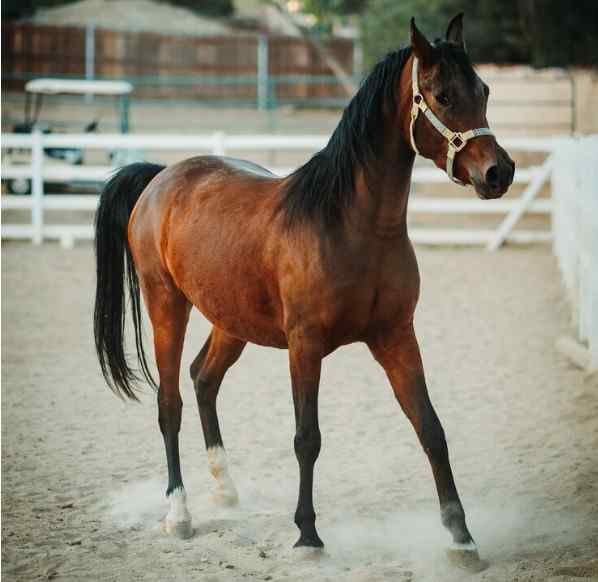What is the scientific name of a horse? The scientific name of a wild horse is Equus ferus, and the domestic horse is Equus ferus caballus.
The domestic horse scientific name is Equus ferus caballus. Horses are mammals in the Equidae family, characterized by high speed, endurance, and a long history of domestication. The scientific name of horse facilitates the accurate classification of these animals under biological taxonomy for scientists and researchers.
Table of Contents
Scientific Classification of Horses
Domestic horses can be classified under the following system of classification:
| Kingdom | Animalia |
| Phylum | Chordata |
| Class | Mammalia |
| Order | Perssodactyla |
| Family | Equidae |
| Genus | Equus |
| Species | ferus |
| Subspecies | caballus |
The scientific name of horses follows the binomial nomenclature system, which helps to distinguish them from other Equidae species, such as zebras and donkeys.
Common Horse Scientific Name Meaning
The scientific name Equus caballus can be broken down as follows:
- Equus: This is the genus that horses, zebras, and asses, belong to.
- caballus: This species name specifically refers to the domestic horse.
Therefore, Equus caballus means domestic horse, placing the horse in the donkey family but identifying it as a separate species.

Horse Scientific Name Pronunciation
Pronunciation of Equus caballus:
- Equus: EH-kwus or EEK-wus (both are correct depending on region)
- caballus: kaˈbal-lus
Put together, it’s commonly pronounced as:
- (EEK-wus kaˈbal-lus) or (EH-kwus kaˈbal-lus)
That is how most scientists and veterinarians would say the name formally.
🐴 Interesting Facts About Horses
- Horses sleep standing up:
- Known as a unique mechanism that locks the horse’s limbs, it is much easier to rest because the horse does not have to fall.
- Horses have an almost 360-degree vision:
- With large eyes on their heads, horses have the widest field of vision. They practically see all around their body.
- They determine a horse’s age through its teeth:
- When birth records are not available, veterinarians try to estimate their approximate age by examining their teeth.
- Horses use body language to communicate:
- They use their ears, eyes, tail, and overall posture to express their emotions. Take pinned ears, for example; they usually indicate that the horse is angry or upset.
- Horses have excellent memories:
- They retain memories of people, places, and other animals for many years. This plays an important role when it comes to trusting humans.
List of horse breeds
| Horse Type | Horse Type | Horse Type |
|---|---|---|
| Akhal-Teke | Belgian Draft Horse | Friesian Horse |
| American Paint Horse | Clydesdale | Hanoverian |
| American Quarter Horse | Dutch Warmblood | Haflinger |
| Andalusian | Exmoor Pony | Holsteiner |
| Appaloosa | Fouta Horse | Irish Draught |
| Arabian Horse | Galiceno Horse | Irish Sport Horse |
| Azteca Horse | Hackney Horse | Jutland Horse |
| Barb Horse | Gelderlander | Kentucky Mountain Saddle Horse |
| Bashkir Horse | Gypsy Vanner | Lipizzaner |
| Belgian Warmblood | Hackney Pony | Lusitano |
| Black Forest Horse | Hanoverian | Marsh Tacky |
| Bosnian Mountain Horse | Haflinger | Mongolian Horse |
| Brandenburger | Hackney Pony | Mustang |
| Breton Horse | Hanoverian Warmblood | National Show Horse |
| Bulgarian Horse | Holsteiner | Orlov Trotter |
| Canadian Horse | Icelandic Horse | Palomino |
| Carolina Marsh Tacky | Irish Draught | Paso Fino |
| Caspian Horse | Irish Sport Horse | Percheron |
| Cleveland Bay | Jutland Horse | Peruvian Paso |
| Clydesdale | Kentucky Mountain Saddle Horse | Pinto Horse |
| Comtois Horse | Lipizzaner | Polish Konik |
| Criollo Horse | Lusitano | Quarter Pony |
| Dutch Warmblood | Manchado Horse | Saddlebred |
| East Bulgarian Horse | Mongolian Horse | Shagya Arabian |
| Eriskay Pony | Mustang | Standardbred |
| Exmoor Pony | National Show Horse | Suffolk Punch |
| Fell Pony | Orlov Trotter | Swedish Warmblood |
| Finnish Horse | Paso Fino | Swedish Ardennes |
| Florida Cracker Horse | Percheron | Tennessee Walking Horse |
| Friesian Horse | Peruvian Paso | Thoroughbred |
| Galiceno Horse | Pinto Horse | Trakehner |


I’m curious to find out what blog system you’re using?
I’m experiencing some minor security issues with
my latest website and I would like to find something more risk-free.
Do you have any solutions?